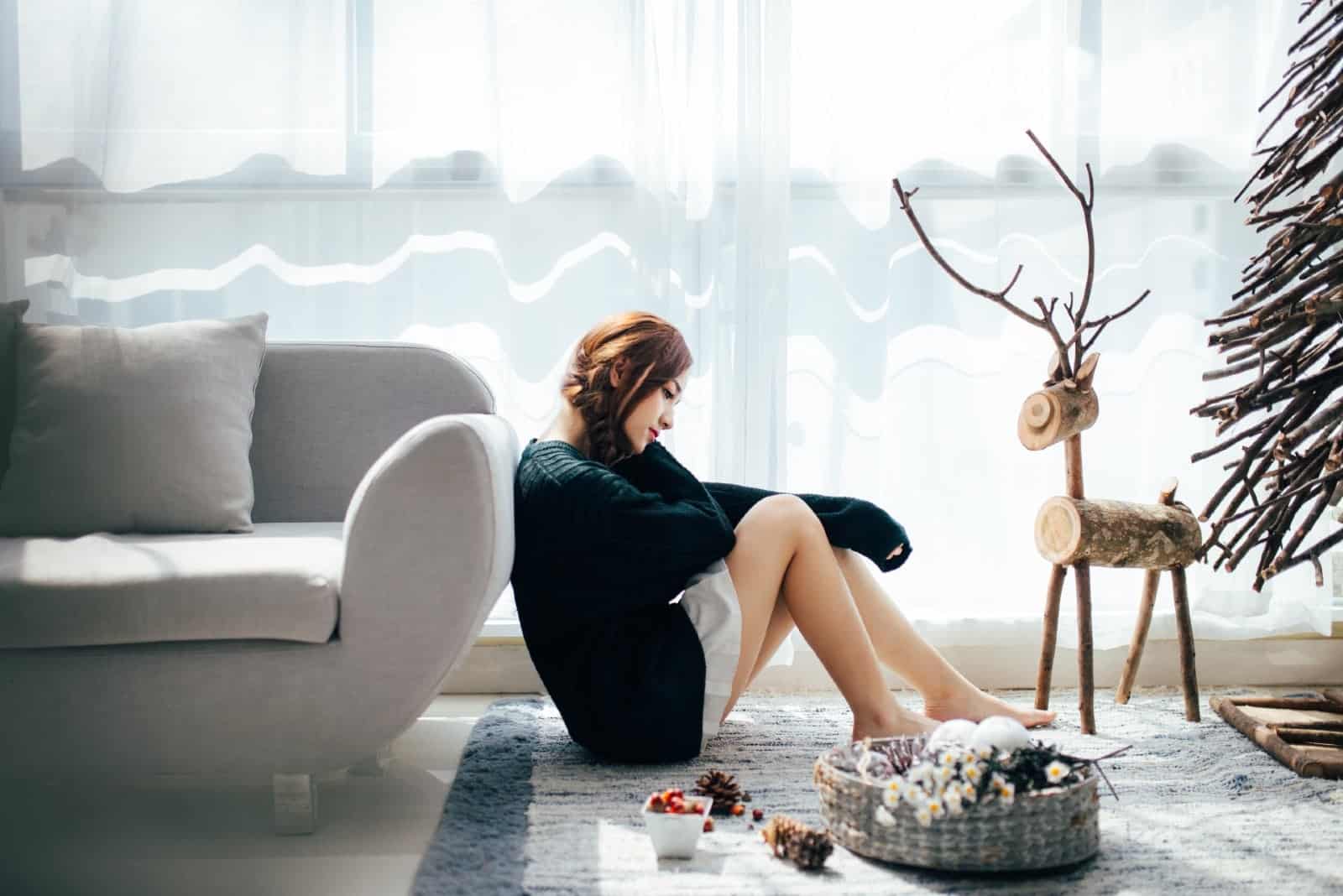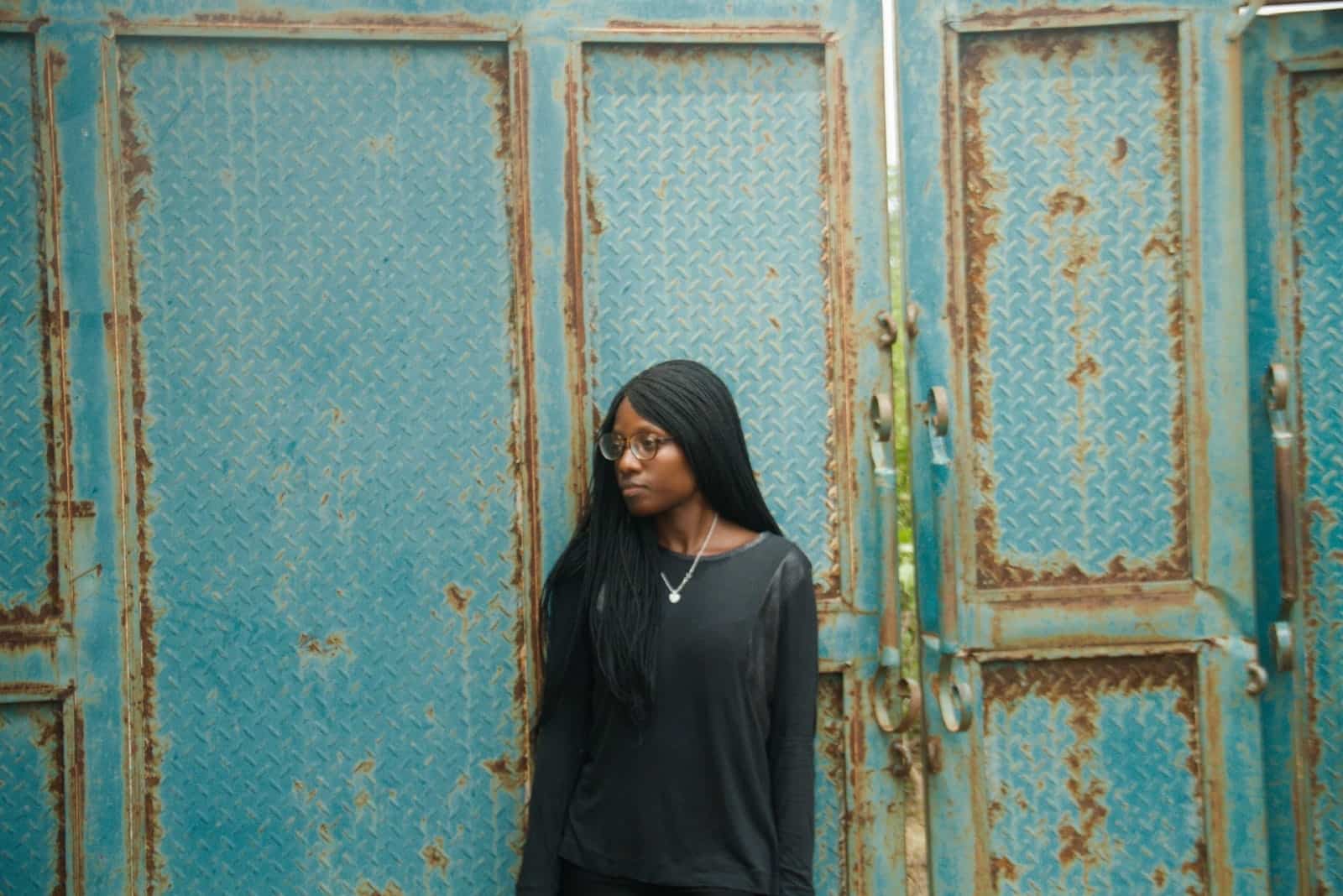16 Eye-Opening Truths About The Ambivalent Attachment Style
Out of all attachment systems, the ambivalent attachment is likely to cause you the most trouble.
It is characterized by insecurities, trust issues, and abandonment trauma, which all source back to your childhood.
When you have an ambivalent attachment style, you’re taught to be unsure of love.
You never got the support, acceptance, and safety from your first attachment figures as a child, and you grew to build unhealthy bonds with other people in your adult life, as well.
As scary as this might sound, the good news is that it can be worked on. However, before anything else, you have to diagnose yourself with having an ambivalent attachment style.
After that, you can dig deep for the causes and focus on the healthiest coping mechanisms.
Attachment Theory

Attachment theory was introduced by John Bowlby. Simply put, his study revolves around the connection between different people and the way we all bond with others.
The bottom line of this theory states that our infant attachment style impacts all of our adult relationships.
Bowlby claims that we all spend our entire lives following the patterns of attachment we adopted as young children.
According to this theory, there are four types of attachment:
- secure attachment style
- anxious-preoccupied attachment style
- dismissive-avoidant attachment style
- fearful/insecure-avoidant/disorganized attachment style
Mary Ainsworth Strange Situation
Mary Ainsworth was one of John Bowlby’s closest colleagues.
She’s best known for the procedure she developed called Strange Situation – a set of methods she used to analyze and investigate attachment security.
Even though the author deals with infants and young children, this procedure shows an unbreakable connection between attachment patterns in childhood with those you have now, as an adult.
8 Behavioral Patterns Typical For Ambivalent Attachment
Everyone with this attachment disorder displays pretty similar behavior.
You’re preoccupied with your interpersonal relationships, insecurities overwhelm you, and you’re overwhelmed with fear of abandonment. Sound familiar?
Inability to control feelings

One of the first symptoms of this style of attachment is the fact that your heart is the one that leads you through life, no matter what. How romantic that sounds, you must think.
Well, actually, no. It’s one thing if you put your emotions above the ratio. After all, we’ve all been there at one point. We’ve all done something that wasn’t a good idea just because our heart told us to.
However, with you, things are much more complex and severe. You see, the number one problem is that you have no control over your emotions whatsoever – it always happens the other way around.
Yes, it’s great loving someone with your entire heart. It’s amazing to feel joy with every atom of your being.
But what happens when the negative side of your emotions kicks in? It’s not so great to be overwhelmed with sadness, is it?
You would like to be able to take control of your feelings in the moments when you can’t function properly due to your overthinking.
This causes you tons of problems in life. People not only perceive you as too emotional, but you also experience mood swings all the time.
Practically any little thing can throw you into despair. You’re anything but emotionally stable and balanced, whether you like to admit it or not.
Urge for intimacy

When most people hear the word intimacy, they think about some under the sheet action. Well, the truth is that intimacy is much more than that.
If you have this type of insecure attachment style, you crave intimacy but not only the physical kind.
Instead, you have this urge to form a deep bond with another person – the urge to connect with your special someone on a spiritual level.
That sounds great when you’re already in an intimate relationship. However, the problem is that you expect this intimacy to be built right away.
It’s like you don’t get it that people need time to open up to you and to welcome you into their hearts.
Besides, as much as you try, you can’t form a valuable connection with just about anyone who comes into your life.
The bottom line is that you rarely love a specific person. Instead, due to your attachment disorder, you love the potential they have.
You see them as someone who could become “your person.” As someone who will fill in the void inside your soul.
This kind of attachment behavior is one of the most frequent symptoms of ambivalent attachment in adults.
You see, you never felt this genuine bond with your primary caregivers when you were a child, and it shows.
So, now that you’re all grown up, you’re doing everything in your power to find that missing piece. Well, the problem arises when you look for it in all the wrong places and people.
Fear of abandonment

Among other things, you have deeply rooted abandonment trauma. This is especially common for young children who were separated from their parents or primary caregivers at an early age.
You assume that everyone will treat you the way they did. You can’t build a healthy romantic relationship as your fears block you and prevent you from thinking straight.
The moment you notice that you’re growing fond of someone (which is not rare), you also get all paranoid.
Instead of enjoying the happy moments with someone you love and who loves you back, negative thoughts take over you.
You immediately think of different scenarios where everything will go wrong. Of course, in all of those situations, you’re the one who is being left behind.
You start changing yourself in an attempt to keep this person next to you. You’re 100% positive that you’ll be abandoned sooner or later.

And who could function properly under this kind of pressure? That’s right, nobody, so it’s no wonder that you start feeling dissatisfied.
After all, you live in constant fear of failure. Even if everything is going great, you look for non-existing red flags.
I get it: you think that this is the way to prevent the worst possible scenario from happening. You’re overly cautious, thanks to everything painful you’ve experienced during your early childhood.
You’re actually trying to spot the signs of abandonment in time so that you can act on them right away, like that would make any difference.
However, instead of keeping your loved one close to you, your attachment disorder just chases them away. You can’t seem to relax, and you turn into a naggy and bitter person who always expects the worst.
Being the one who loves more

For as long as you can remember, you’ve been the one who loves more. This is not just how things roll in your love life – you’re like this with your friends and family members as well.
Understandably, this frustrates you. After all, who would enjoy feeling unloved and unwanted?
You’re the one making all the sacrifices and keeping all of your interpersonal relationships from breaking.
The one putting in all the effort while the other party takes you for granted.
You’re the one who is devastated after the split while everyone else moves on with their lives as if nothing happened.
Well, this is another sign of an ambivalent, anxious attachment style. You hold on to the object of your affection so tightly that they become the only reason for your existence.
However, even if they love you back, they can never give you as much as you think you deserve. Well, the point is that they shouldn’t.
Not only that: you shouldn’t be so focused on them either. You can’t love anyone else more than you love yourself.
And that’s the key to your problem. You only look at things from your perspective, and you only validate the love you give to people as enough.
Inability to take rejection

We all get rejected from time to time. Sometimes, the girl or a guy we’re into simply doesn’t love us back.
We get fired from that awesome job we liked so much. Or someone we saw as a potential friend doesn’t show any interest in hanging out with us.
It’s not comfortable – I won’t lie to you. You can be the most confident person in the world, but something like this will probably mess with your head and give you low self-esteem.
The bottom line is that rejection sucks. It sucks caring for someone who doesn’t care for you or having the feeling that you’re somewhere you’re clearly not wanted.
However, when this happens to people with other attachment styles, most of them accept it, one way or another. They feel lousy for a while, but then suck it up and move on with their lives.
But not you. You’re practically incapable of taking rejection.
Don’t worry: you have no narcissistic tendencies. It’s not that you can’t believe that someone doesn’t want a God-given you in their life.
It’s actually completely the opposite. It doesn’t matter much where this rejection comes from – you always see it as the end of the world.
The problem is that you take it personally. You can’t grasp the idea that the object of your affection maybe doesn’t want a relationship right now.
No, it has to be something wrong with you. You’re unlovable and not good enough – there is no other explanation, right?
Besides, even if they don’t like you, it doesn’t mean that you’re not worthy. Everyone has the right to choose for themselves, and the same way this person didn’t pick you, someone else will.
Relationship dependency

It doesn’t matter how much you love the person next to you: you should always remain an individual for yourself. You can be in love with someone, but you can never become their girlfriend or boyfriend only.
At least, this is how things should be. Sadly, it’s not how you work.
Instead, every time you get close to a new guy or a girl (or even find a new friend), you immediately grow incredibly attached to them.
Not only that: you become emotionally dependent on this person like the whole world spins around them.
In fact, that’s exactly what’s going on: they become the center of your universe. You forget about everything and everyone else and only have eyes for them.
This is more than infatuation or love, and it often turns into obsession. Before you know it, you can no longer picture your life without them by your side.
You’re not in this relationship because you want it; you’re here because you need this person the same way you need air to breathe. Of course, once you go your separate ways, you’re completely lost.
Your life has no meaning, and you have a hard time going back to your old ways. Why? Because you cease to exist outside of your relationship.
Besides being unhealthy, it also gives the other person the green light to treat you the way they please.
You keep on showing them that there is nothing they can do for you to stop loving them, and sooner or later, this backfires on you.
The constant need for reassurance

Let’s be honest: nothing is ever good enough for you. No matter what your loved ones do to prove their love, you won’t believe them.
You’ll always look for clues of their indifference or infidelity. You’ll never be satisfied with the attention and care you’re getting because you’ll never be sure about it.
This can all be blamed on your infant attachment style. Your primary caregivers didn’t meet your needs as an infant, and now you’re the one paying the price.
It’s as though you can’t believe that someone really could love you. They probably have a hidden agenda, so you’re on a constant lookout, expecting them to backstab you.
This is another consequence of your unhealthy early childhood. Without even being aware of it, you’ve developed some serious trust issues that manifest in all of your relationships.
What you need is reassurance. You need a partner who will spend all of their time telling you that you’re good enough, that you’re the only one for them, and that they love you.
However, even if you get this, it won’t put an end to your misery. Even in this case, there will be times when you’ll, if nothing else, doubt their honesty.
Self-blame

Another ambivalent attachment pattern is engaging in self-blame. When something bad happens in your life, somehow you manage to make yourself out as the bad one.
You feel guilt and shame for not getting enough love. You feel guilty for them not treating you right, and you blame yourself for everything going downhill in all of your relationships.
Do you understand how absurd this is? Simply put, if someone broke your heart, you’d end up blaming your heart for being in their way.
See also: Anxious Preoccupied Attachment: Overcome The Insecurity
3 Not-So-Obvious Causes Of Anxious Ambivalent Attachment
How do you adopt an ambivalent attachment? Do you just wake up one morning and decide it’s time for a somewhat different style of attachment?
Well, you don’t. Everything going on now is a consequence of your painful childhood experiences. Learn what triggered your ambivalent attachment style, and only then will you be able to cope with it.
Broken attachment relationships in childhood

According to attachment research, the first and the most significant cause of anxious ambivalent attachment in adults are their childhood experiences and child development.
When you have a broken attachment relationship in childhood, everything from then on will probably go downhill.
In fact, it’s the parenting style your primary caregivers exposed you to and the infant attachment style you had that affect all of your relationships in the future.
According to developmental psychology, parents raising their children inconsistently is the number one cause of an unhealthy early attachment. What does that mean?
Well, when you were a kid, you never knew what to expect from your first attachment figures – your parents.
Consequently, this helped you become an insecure adult, and it impacted all of your adult relationships. There were times when your primary caregivers would give you all the love in this world.
However, despite that, they didn’t give you emotional support when you needed it or neglected you at some other point.

Basically, you spent most of your early years living in fear. You never knew whether your parents would be 100% there for you the next day or if they’d ignore you.
This way, your needs were never fully met. I’m not talking about food and shelter here: I’m talking about your emotional needs and mental well-being.
You never managed to create a real bond with your caregivers. You never felt that they were emotionally connected to you to the fullest extent.
They were never completely dedicated to raising you either. So, you kept feeling irrelevant.
They were people you couldn’t rely on, and people you couldn’t trust your life with. Even though you were just a little child, this has stuck with you.
Also, there is a possibility that you had to be the parent in your story, at least on an emotional level. At the same time, you’ve dealt with gaslighting parents who didn’t see anything wrong in your upbringing.
Your caregivers weren’t mature enough to act as healthy attachment figures, and they asked for emotional support from you instead of it being the other way around.
So, here we are. Do you realize how each one of these behavioral patterns mirrors your behavior today?
Do you understand that you’ve spent your entire adulthood looking for the missing pieces of your childhood?
Different types of abuse

Ambivalent attachment is also quite frequent in victims of abuse. Bear in mind that I’m not only talking about physical abuse here but of all other types of abuse as well, including emotional abuse.
When you are abused as a little child, you can’t grasp the fact that your parents are bad.
These people are your only secure base from this harsh world, and you love them with all of your heart, despite them being violent or doing you harm.
Ironically, it becomes easier for you to blame yourself for this situation. Besides, they kept convincing you that you were the bad one and that you’re guilty of this abuse.
Well, how hard can it be to believe them? They manipulated you into taking the blame off their chests.
When someone (especially if that someone is your parent) keeps telling you that you’re not worthy and good for nothing, you’ll adopt this opinion after a while.
Do you see where I’m going? Now that you’re a mature person, you still stick to these beliefs.
You still think of yourself as not valuable enough, and you still have serious issues with self-blame. Well, your caregivers are responsible for you feeling this way.
Separation from the parents

Is it worse to have a parent who is physically present but neglects their child’s needs or one who vanishes from your life for good? Well, it’s a dead heat.
But what is certain is that both of these things leave permanent consequences on your attachment behaviors and mental health.
Both of these types of parents disregard an infant’s needs from early childhood, one way or another.
Therefore, one of the causes of an anxious, insecure attachment style can be the early separation from your parents.
If the people who brought you into this world abandoned you, what can you expect from others?
If they backstabbed you and left you alone, why would your romantic partner behave any differently?

You might not be aware of it, but this is the logic behind your patterns of attachment. Your separation from your caregivers is probably the most painful traumatic experience you’ve had to go through.
So, it’s perfectly natural that you devoted the rest of your life to not allowing it to happen again.
You think you couldn’t stand anyone you love walk away from you ever again, so you’re doing everything in your power not to let them go.
Even though this is reasonable, it’s anything but healthy. You see, you can’t glue yourself to people.
Besides, do you really want someone to stick around just because you’re forcing them to stay? Or would you want them to stay with you because there is nowhere they would rather be?
I won’t lie to you: people will come and go. And the harsh truth is that there is absolutely nothing you can do about it.
However, what you can influence is your reaction to it. You can either continue observing every departure as the end of the world, or you can accept it as a part of life.
5 Revolutionary Ways To Cope With An Ambivalent Attachment Style
Luckily for you, attachment styles are not cast in stone. Changing your entire attachment system is difficult, but it can be done.
However, before being ready for any crucial changes, you have to learn to cope with the style you already have.
Practice mindfulness

You can’t control your reactions if you’re not even aware of them. In this case, you act impulsively, and you often find yourself in a situation where you can’t explain your behavior.
Well, that is why you should practice mindfulness: a form of meditation that helps you become fully aware of yourself, your senses, and your feelings in any given moment.
Basically, this means listening to yourself and your inner voices. It means paying attention to your deepest thoughts and feelings, without running away from them just because you don’t like them.
This is the only way for you to dig deep inside your soul and eventually change your behavioral patterns.
Make sense of the past

For years, you kept pretending that your early childhood traumas never existed. It was easier for you not to face the hell you barely survived.
Nevertheless, I hate to break it to you, but every piece of attachment research will tell you that you’ll have to make sense of the past.
You’ll have to look it straight in the eyes and show it that you’re no longer afraid.
There is no point in running away from your demons because they’re about to get you. Also, there is no point in fixing the consequences if you haven’t tackled the source first.
This is exactly what you should do: come to terms with what caused the development of this attachment style. What hurt you so badly in your childhood that it still affects you this severely?
I know that admitting your parents’ mistakes is difficult. No matter what they did to you, you still idealize them and see them as better than they are.
Don’t get me wrong: I’m not advising you to confront them – especially if you have no relationship whatsoever. I’m begging you to confront your past hurts they’ve caused.
Confront that crying kid you once were. Tell them that everything will be okay and heal their little broken heart.
Accept the fact that you didn’t have the happiest childhood and that there was nothing you could have done about it, and the fact that you can’t erase your past and that there is absolutely no point in running away from it.
You can learn from it. You can deny it access to your present and future.
Recognize your triggers

It’s crucial to know yourself to the core. The part of this is self-awareness: a process in which you analyze your entire personality and come to terms with the person you really are.
Even though most ambivalent attachers share most of their attachment style symptoms, everyone reacts differently in different situations. Why? Because not everyone has the same trigger.
Well, if you plan on changing your behavior, it’s finally time for you to recognize your triggers.
What makes you insecure the most? What scares you? What awakens the volcano called insecure, anxious attachment style inside of you?
Once you get all of these answers, you’ll stay away from potentially dangerous situations.
Not only that: you’ll also learn to recognize these risky moments. You’ll learn how to bring yourself back to reality every time you start feeling that the symptoms of your attachment style are taking control over you.
Healthy relationships with a secure attachment style

Even though the entire self-healing process always relies on one person and one person alone – yourself, your choice of relationship partners plays a significant role in coping with your attachment style as well.
This is where you should find your secure base and sanctuary.
The greatest of all disasters would be to pick someone with an avoidant attachment style or someone who deals with the same attachment issues as you.
Just imagine how toxic that relationship would be if you’re both insecure and have abandonment and trust issues.
While I’m telling you to discriminate against those similar to you, the best choice for you would be someone with a secure attachment style.
This is the person who can lead you through the process of regulating your emotions and mental health. The one you can lean on and someone who will help you cure all of your traumas.
The only person who will welcome all of your troubles openly and who will give you the attachment security you so desperately crave.
When someone is raised in a secure attachment style, they believe in love. They trust people and are consequently trustworthy. They know all about consistency and loyalty, and that’s exactly what you need.
Psychotherapy

Remember: there is no shame in asking for help.
Going to psychotherapy is a step you must take if you notice that you don’t have the capacity for regulating your preoccupied attachment style without professional help.
A developmental expert will help you get to the source of your early attachment issues and will help you rebuild your entire attachment system.
Final Words:
Whatever you do, I’m begging you, don’t look down on yourself for having an ambivalent attachment style. First and foremost, developing it wasn’t your fault.
Besides, you can make drastic changes for the better if you follow this step-by-step guide. Do everything right, and I assure you that progress will appear.







